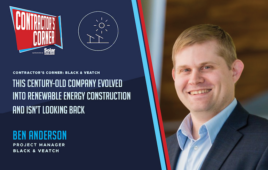Uncle Sam’s tax code unwittingly sends American non-profit corporations to the back of the solar line. Arguably among the most socially-minded of our corporate organizations, non-profits have had the greatest difficulty qualifying for solar financing. Solar installers are not inclined to work with them, because of their inability to deliver funded solutions. Fortunately a new solution may make non-profits a viable solar business opportunity.
Non-profit: Not an enticing word for solar
About 1.5 million charitable entities operate in the US (per the National Center for Charitable Statistics). I’m talking about your neighborhood church, schools, homeless shelters and other private organizations. Many of them protect, support and uphold our rights, guide our morality and our future. Yet, in the renewable energy revolution, non-profit has been a dirty word. Solar contractors often see them as too small, too poor, without reliable revenue and not credit worthy. Banks don’t want to lend to them, solar leasing and PPA companies don’t want to lease to them, and the government hasn’t offered them a break equivalent to the value of tax credits and depreciation—which they can’t use.
To make matters worse, non-profit solar installations are typically small to medium-sized projects. Smaller installations are always challenging to fund, no matter the tax status, because the cost of due-diligence required by most funders requires a larger size project. The increased risk and the small potential return of charitable organizations generally makes investors disinterested.
Upcoming financing methods make solar possible for non-profits
A couple of structured financing methods have emerged that could apply to a considerable percentage of the non-profit sector. Mind you these are nascent, so not yet common; each applicant has different odds of being successful with them. Both of these methods involve third-party ownership via a Power Purchase Agreement (PPA), because to maximize the fiscal benefits of solar, there must be an entity that can absorb the significant tax benefits of the investment; a part of those cost reductions can then be passed on to the non-profit entity. In areas where PPAs are not allowed, lease structures are often used.
But the pivotal altering factor in these financial solutions is the manner of managing risk and return. Each financing method approaches this differently.
PPA with PACE
I won’t hide that I’m bullish on PACE; it’s a game changer in many ways. Because of the equity of non-profits that hold the deed to the real estate they want to improve, such organizations are granted a construction credit line. As long as they are operating in the black, PACE provides a way to leverage this line. In California, this condition will pacify PPA investors who might otherwise turn the other way, because the risk is now removed. First, the terms of the PPA (or lease) are negotiated, then the PACE application is processed. The PACE administrator will then make the regular payments to the PPA capital provider (and system owner), and the non-profit property tax payer will repay the PPA through their annual assessment over the term of the contract—generally 20 years.
Commercial PACE administrators also typically have a threshold of deal size that is higher than most non-profits will need. But a few administrators have developed partnerships with capital providers that are now ready to engage in these smaller transactions. This allows the administrator to make revenue both from the PPA and the PACE contract. Smaller contracts then make business sense; I have done projects as small as a 30-kW solar systems, or about $100,000. Even in these smaller projects , solar installers can generally receive progress payments during installation.
The disadvantage is that PACE commercial programs are only in approximately half of the states, and some of them are barely getting started. Solar contractors may need to wait a bit before taking advantage of this structure. To see who is active in your state, check this site.
Getting creative with lenders
If you can’t find a lender for your non-profit, then create one! The process is legal, though expensive and tumultuous, but it’s a lot better than paying 40% over those that can take the cumulative value of the solar tax benefits. The key here is that the non-profit entity must have, within its constituency, qualifying and willing prospective stockholders. But this is not as challenging as it might seem because the advantages make a strong investment, and no folks care more for a charitable institution than those in its own community.
A Special Purpose Corporation (SPC) is created to own the asset of the solar installation, just like any other leasing or PPA company. Stocks are then sold to “supporting constituents” who are members of the organization, trust its management and like the benefits of the deal: they get all the tax advantages, and a steady annuity from an organization they trust and love. Generally it takes four to eight investors to subscribe the investment, depending on the size of the plant. An “arm’s length” administrator is selected, one who has no interest whatsoever in any of the parties involved. His or her job is purely to create the company, structure the agreement, collect money from the non-profit and distribute it to the stockholders, return tax documentation and more. This administrator can be an accountant or attorney. The fee for these services must be added to the cost of the deal—generally about 10% or more plus annual admin fees (note that the PPA/PACE structure will also have fees and most likely higher interest). The beauty of this SPC structure is that the negotiated terms are jointly set. So the length of the PPA, the interest rate, the buy-out option etc, are directly agreed upon by the non-profit (the customer) and the stockholders (owners of the solar installation). Want a 7-year buy-out for pennies on the dollar? Can do. Want a pre-paid lease? No problem, if the investors agree. This is a much more friendly PPA structuring process than usual, because the SPC wants to support the non-profit.
The non-profit must take the lead
The disadvantage is that solar sales representatives attempting to guide this must watch their time investment. I suggest that he or she points to it, but not lead with it. Once the process explained, the organization must find their internal champion to push the deal through, or pay someone to make it work. I know this first-hand, having wasted way too many months attempting to drive these structures in instances without a robust commitment inside the organization. Using these financing methods only works with extremely motivated constituencies that have more than one champion among them willing to drive the process. If the non-profit formulates the PPA quickly and structures the transaction through their selected administrator, then it’s a marriage of interests made in heaven, including for the solar installer.
Philippe Hartley is Principal at Clean Financing, which provides financing expertise for the solar industry. For more information, or to evaluate your project’s PACE/PPA funding potential, contact Philippe at ph@cleanfinancing.com.






Just exactly what is PACE.. I don’t see an explanation in this article.. I represent a non-profit church in Grand Rapids,MI
Charles Dykstra
Hi Charles,
PACE – Property Assessed Clean Energy.
https://www.energy.gov/eere/slsc/property-assessed-clean-energy-programs
The money comes from federal sources and disbursement is handled by PACE brokers. Repayment is via property tax.
I’ve looked at PACE financing for a few NPO/commercial clients as well as residential customers. The advantages are discussed in the article. The disadvantage for PACE financing is that the PACE lender becomes the senior lien-holder on the property title, all other lenders subordinate.
In the residential market, you’d be hard pressed to find a mortgage lender or broker willing to subordinate their loan. When it comes time to sell, unless the borrower can pay off the PACE loan, no lender will agree to subordinate their loans. Makes qualifying for a mortgage or re-finance almost impossible.
Same in the commercial/NPO solar market. The deed/title to your church or house of worship is a valuable piece of collateral. Signing a PACE loan effectively shuts out any possibility of using your real estate as collateral for solar or any other project that may need finance funding.